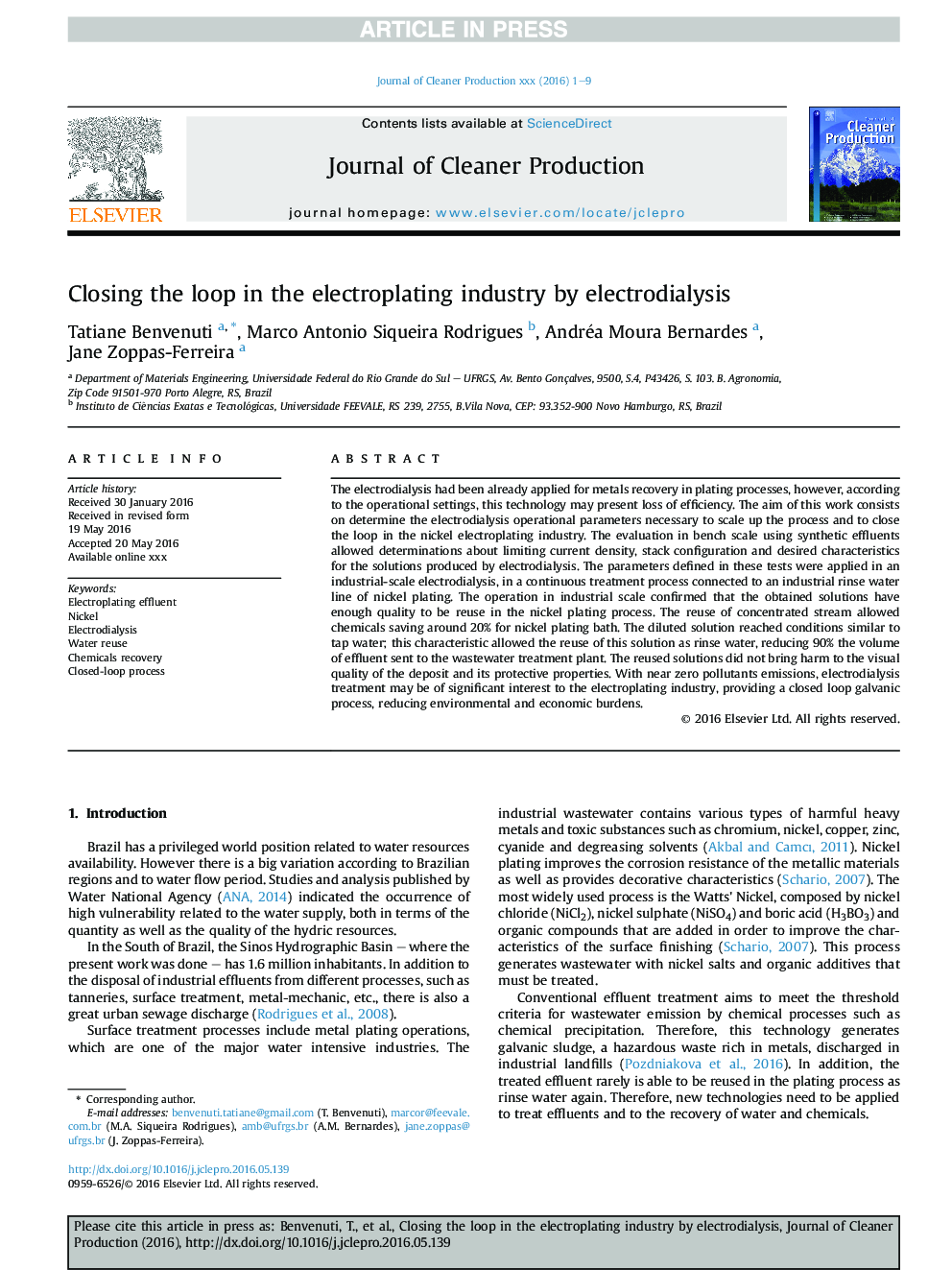| Article ID | Journal | Published Year | Pages | File Type |
|---|---|---|---|---|
| 5479698 | Journal of Cleaner Production | 2017 | 9 Pages |
Abstract
The electrodialysis had been already applied for metals recovery in plating processes, however, according to the operational settings, this technology may present loss of efficiency. The aim of this work consists on determine the electrodialysis operational parameters necessary to scale up the process and to close the loop in the nickel electroplating industry. The evaluation in bench scale using synthetic effluents allowed determinations about limiting current density, stack configuration and desired characteristics for the solutions produced by electrodialysis. The parameters defined in these tests were applied in an industrial-scale electrodialysis, in a continuous treatment process connected to an industrial rinse water line of nickel plating. The operation in industrial scale confirmed that the obtained solutions have enough quality to be reuse in the nickel plating process. The reuse of concentrated stream allowed chemicals saving around 20% for nickel plating bath. The diluted solution reached conditions similar to tap water; this characteristic allowed the reuse of this solution as rinse water, reducing 90% the volume of effluent sent to the wastewater treatment plant. The reused solutions did not bring harm to the visual quality of the deposit and its protective properties. With near zero pollutants emissions, electrodialysis treatment may be of significant interest to the electroplating industry, providing a closed loop galvanic process, reducing environmental and economic burdens.
Related Topics
Physical Sciences and Engineering
Energy
Renewable Energy, Sustainability and the Environment
Authors
Tatiane Benvenuti, Marco Antonio Siqueira Rodrigues, Andréa Moura Bernardes, Jane Zoppas-Ferreira,
